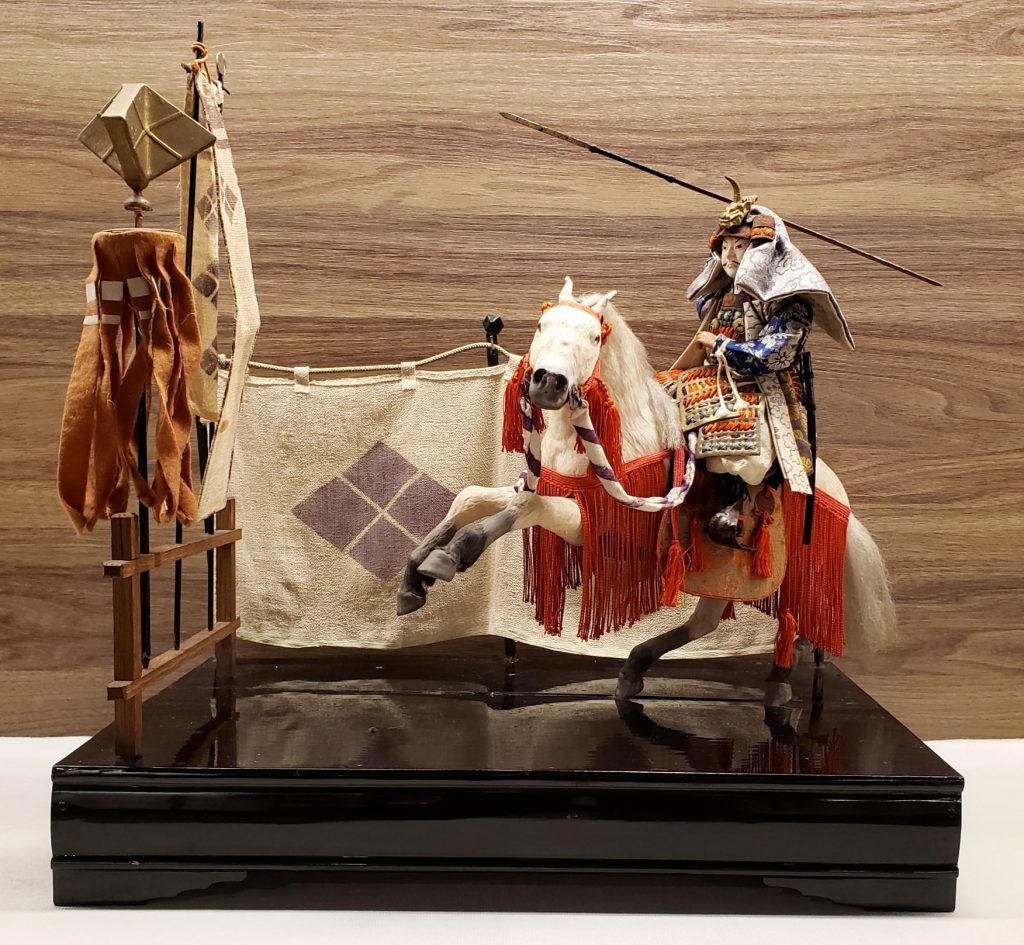
Na data em que se celebra o “Dia das Meninas”, no Japão, vamos olhar para a figura dos Ningyos. Para começar, temos que entender que eles não são bonecos para as crianças brincarem, mas “fetiches” nos quais os pais concentram sua esperança de que elas tenham um bom futuro.
E quais são as mensagens que elas transmitem?
A sociedade tradicional japonesa cultua valores muito definidos para os homens e para as mulheres. Estes valores, que são ainda muito arraigados, sobretudo entre os mais velhos, defluem da História e das tradições que regem o convívio, em todos os níveis sociais.
Quais são estes valores?
Os que definem o comportamento masculino têm raízes no “bushido”, que pode se traduzir como “o caminho do guerreiro”, isto é, o samurai. O Bushidō – “the Way of the Warrior” – é tanto um código de conduta quanto um sistema de vida que pode ser comparável ao cavalheiro no Ocidente. Dá grande importância a certas virtudes como a frugalidade, a lealdade, o domínio das artes marciais, a honra (até à morte, se necessário para preservá-la). O conceito teve origem entre os séculos XI e XIV, tomando forma consubstanciada na figura e vida do samurai, entre os séculos XII e XVI. Durante o xogunato Tokugawa (séc. XIV a XIX) o Bushido tornou-se o código oficial de conduta sob a Lei Feudal japonesa. A estes valores há que acrescentar outros, que são intercomunicantes entre homens e mulheres, como o da honra.
Estes são os valores celebrados no “Dia dos Meninos” – “kodomo-no-hi”, ou “gogatsu-no-sekku” matsuri –, que acontece tradicionalmente no quinto dia do quinto mês do calendário lunar, correspondente ao final de maio ou começo de junho. Fixou-se, então, o dia 05 de junho para o “matsuri” (festival). Considera-se que durante ele, os bonecos – que tomam a forma de guerreiros, na maioria das vezes – tornam-se o abrigo temporário dos bravos que já partiram, protegendo e purificando o menino e a sua casa.
No dia das meninas, por sua vez – o “Hinamatsuri” comemorado no dia de hoje – 03 de março – celebram-se os atributos femininos – a beleza, a gentileza, o bom casamento – incorporados nas “hinabinas”, que são bonecas representando gueixas, imperatrizes, sacerdotisas xintoístas, e a corte imperial (significando o bom casamento), entre outras formas. A este último respeito, uma das manifestações mais populares é o da corte imperial do período Heian (794-1192 E.C.), que consta de um “altar” onde estão dispostas 15 figuras representando, em ordem hierárquica decrescente, em degraus, o casal imperial e a sua corte. Reza a tradição que, findo o “matsuri”, os pais devem levar os bonecos o mais longe possível, porque se não o fizerem, suas filhas ou não se casarão, ou o farão muito tarde.
Outros ningyos são criados para momentos específicos, como os “Gosho ningyo”, que têm a forma de crianças rechonchudas, com pele muito branca, membros pequenos e cabeças grandes e características faciais suaves. Sua história remonta a mais de 400 anos; eles surgiram como um voto de boa sorte para os recém-nascidos. O nome “gosho ningyo” tornou-se universal no final da Era Meiji.
Há também os ningyos protetores da boa sorte e os protetores contra as doenças, na forma de entidades parte do folclore japonês.
A fatura destes bonecos é extremamente complexa e requer quanto mais aperfeiçoados sejam eles crescente destreza. Basta salientar que o rosto dos mais antigos é feito de “gofun”, que é uma pasta de casca de ostra macerada numa cola especial; seus olhos são feitos de vidro, por menores que sejam; os cabelos dos mais antigos eram verdadeiros (agora são feitos de seda), e a vestimenta é tecida especificamente para cada um. Ou seja, uma verdadeira obra de arte, que somente a destreza e a disciplina japonesa tornam possível. ARTE PURA!!!
A pergunta que não quer se calar é se estes valores ainda estão vigentes numa sociedade pós-moderna, que convive com “robots” em substituição aos humanos para crescentes tarefas, num país que se “despopula” à razão de 300 mil indivíduos por ano… (segundo os analistas, a população do Japão está diminuindo desde que atingiu seu pico, em 2008. Ela, que era de 126,7 milhões, em 2017, reduziu-se, desde então, em cerca de 1,4 milhão de pessoas).
E será que, nesta sociedade, os valores tradicionais “masculinos” e “femininos”, sobretudo nos grandes centros urbanos, ainda persistem? Morei no Japão durante três anos e meio, em 2004/7, e a minha experiência foi que os papéis entre a população jovem estão-se cada vez mais amalgamando, tanto em termos de vestimentas – tema fascinante, aliás… – quanto comportamentais. Estariam, então, os japoneses vivendo um “clash” etário, onde os valores dos pais não se espelham nos filhos, e vice-versa?
Temas profundos e instigantes, que poderemos tratar numa outra oportunidade. Por ora, fiquemos com a beleza e a magia dos Ningyos.
As fotos abaixo são da coleção que doei ao Museu Oscar Niemeyer, de Curitiba:
















Doutor em Direito Internacional Público em Paris. Ingressou na carreira diplomática em 1976, serviu nas embaixadas de Bruxelas, Buenos Aires, Nova Déli, Washington, Pequim, Tóquio, Islamabade (onde foi Embaixador do Brasil, em 2004). Também cumpriu missões transitórias no Vietnã e Taiwan. Viveu 15 anos na Ásia, para onde orientou sua carreira por considerar que o continente seria o mais importante do século 21 – previsão que, agora, vê cada vez mais perto da realidade.
